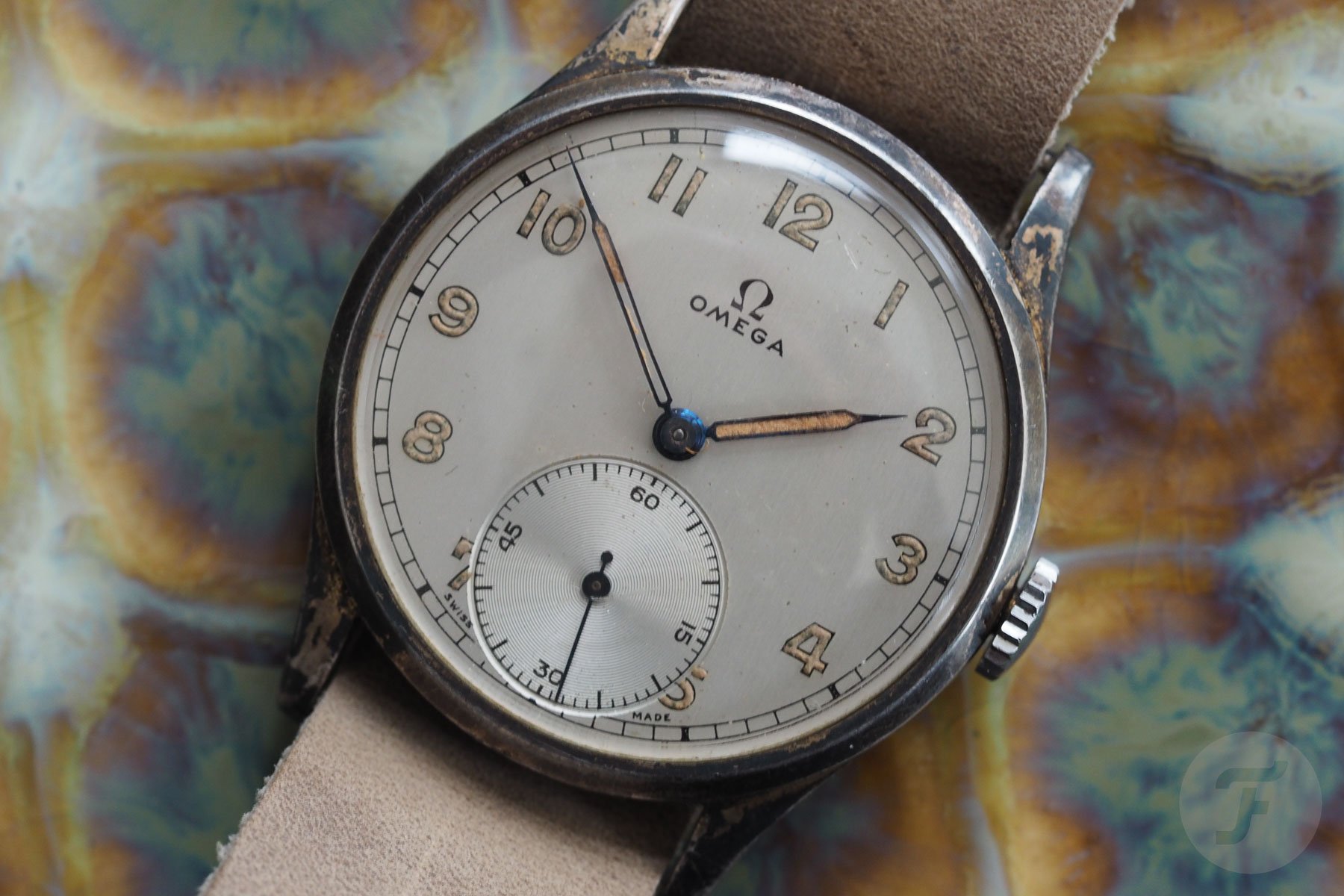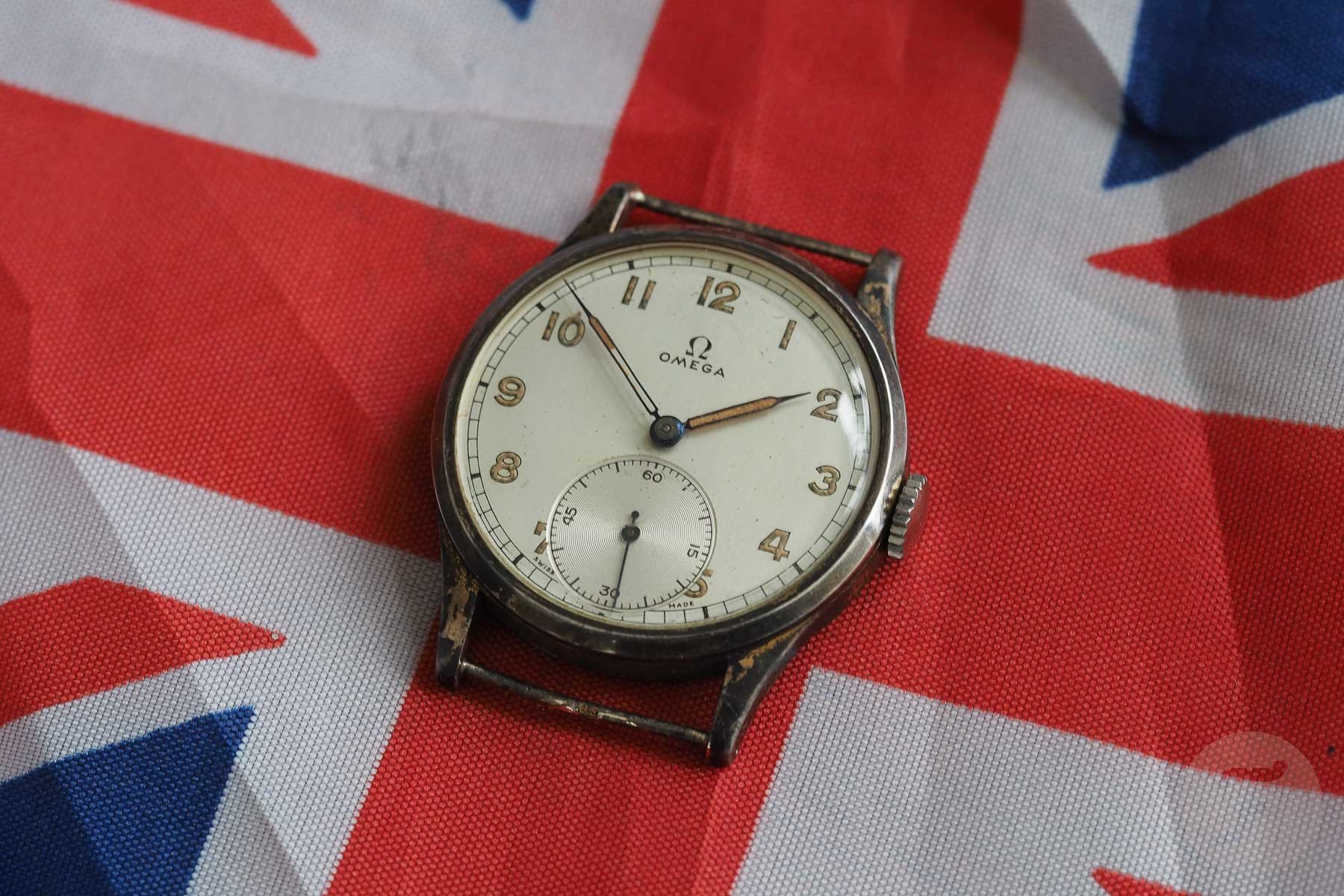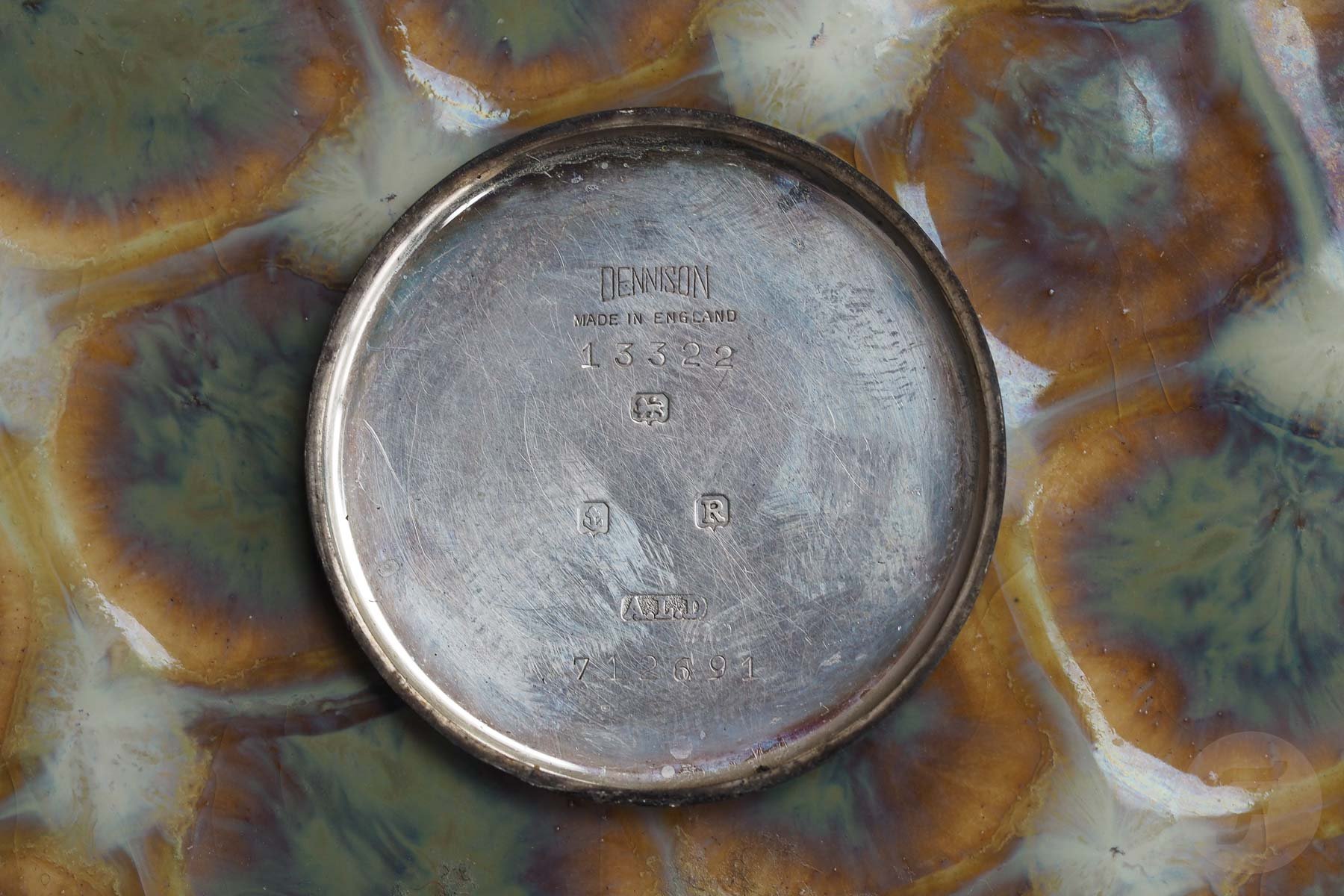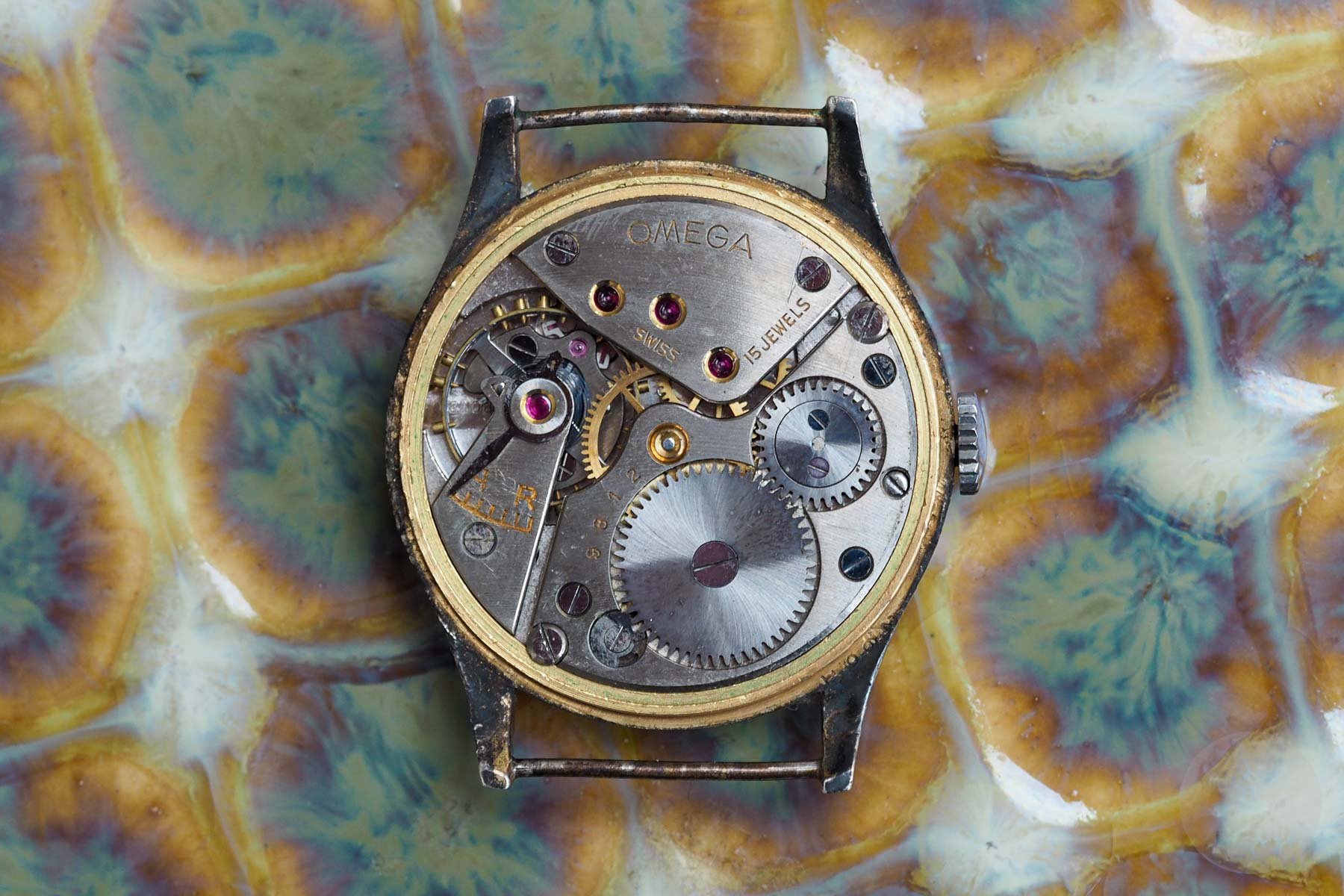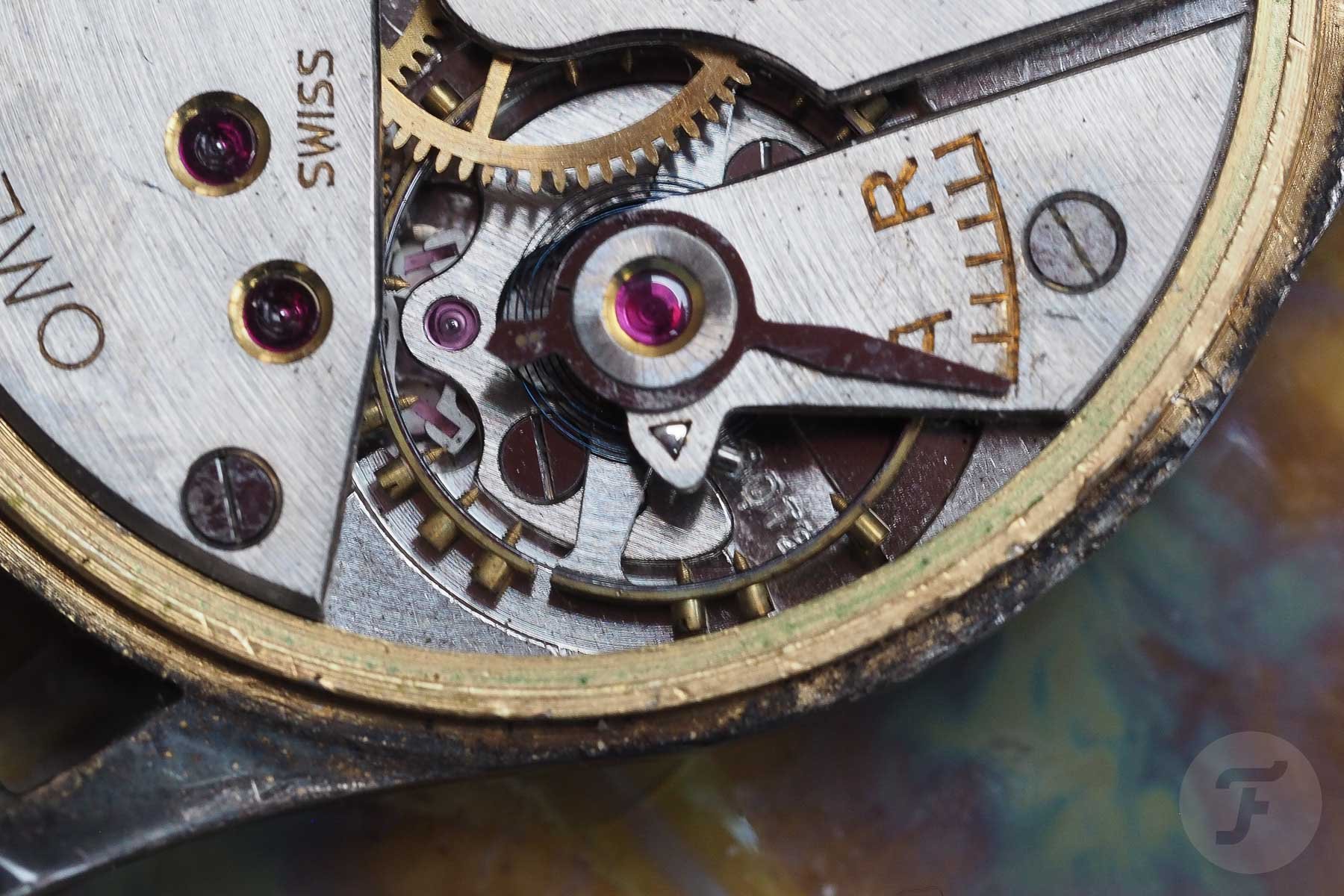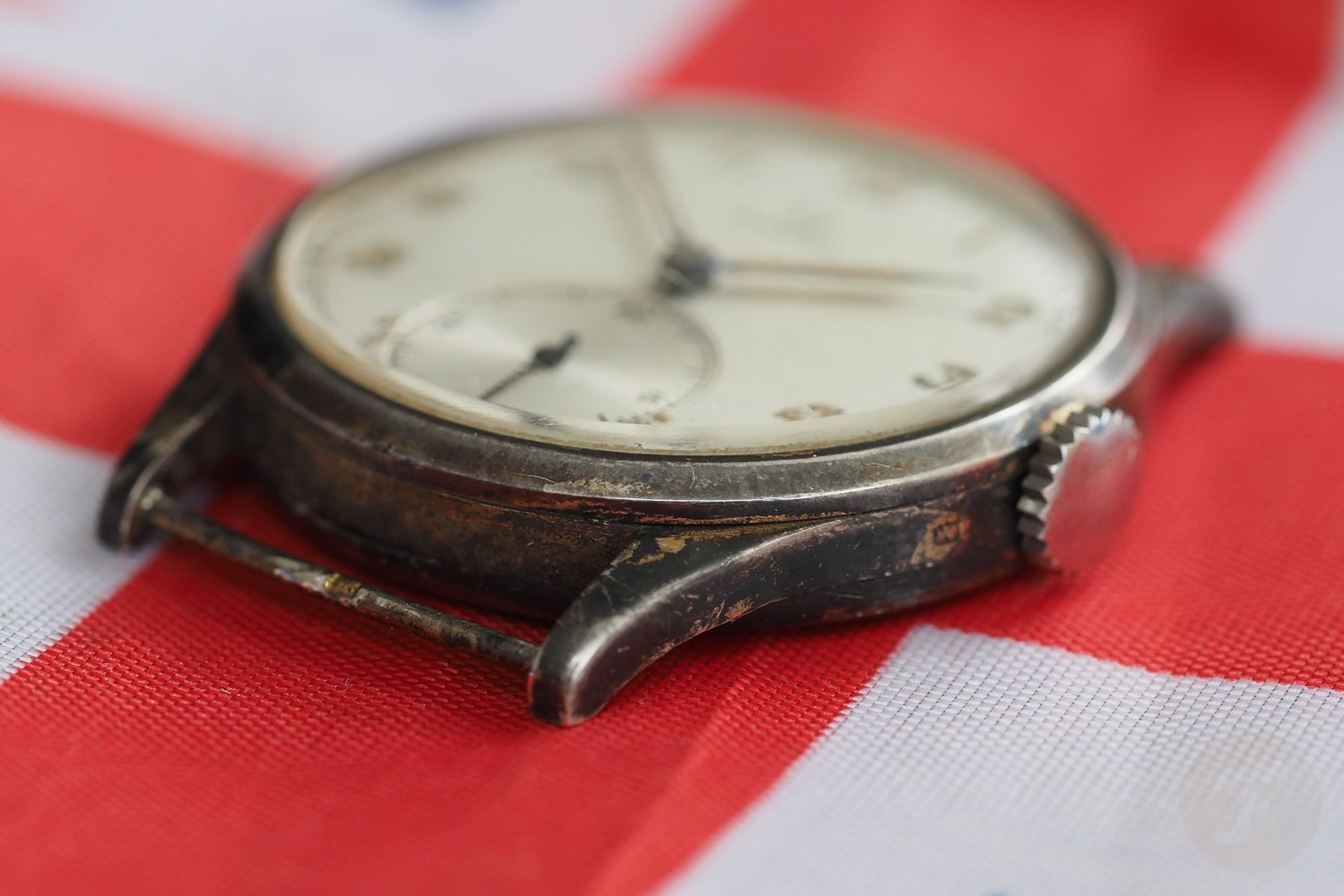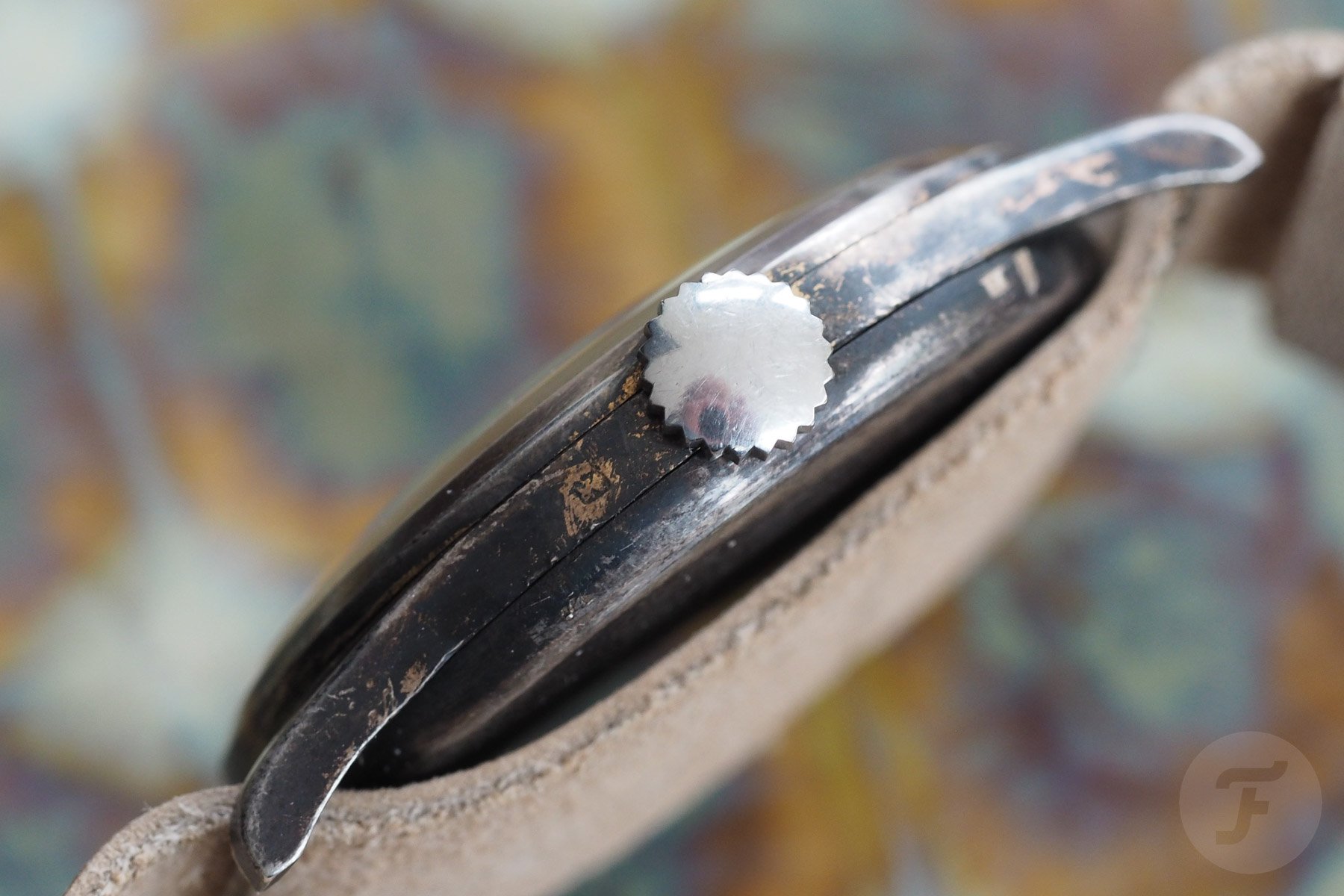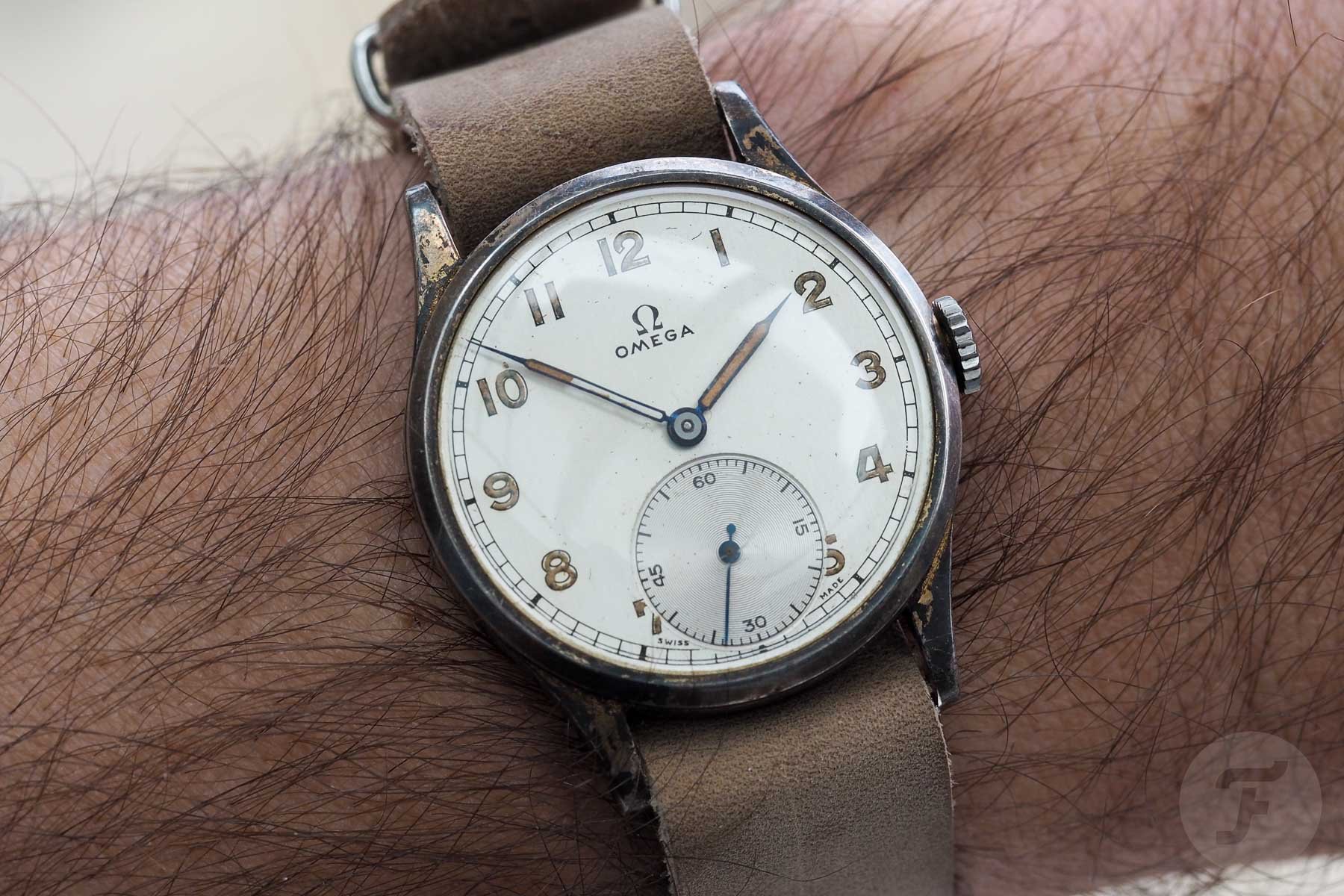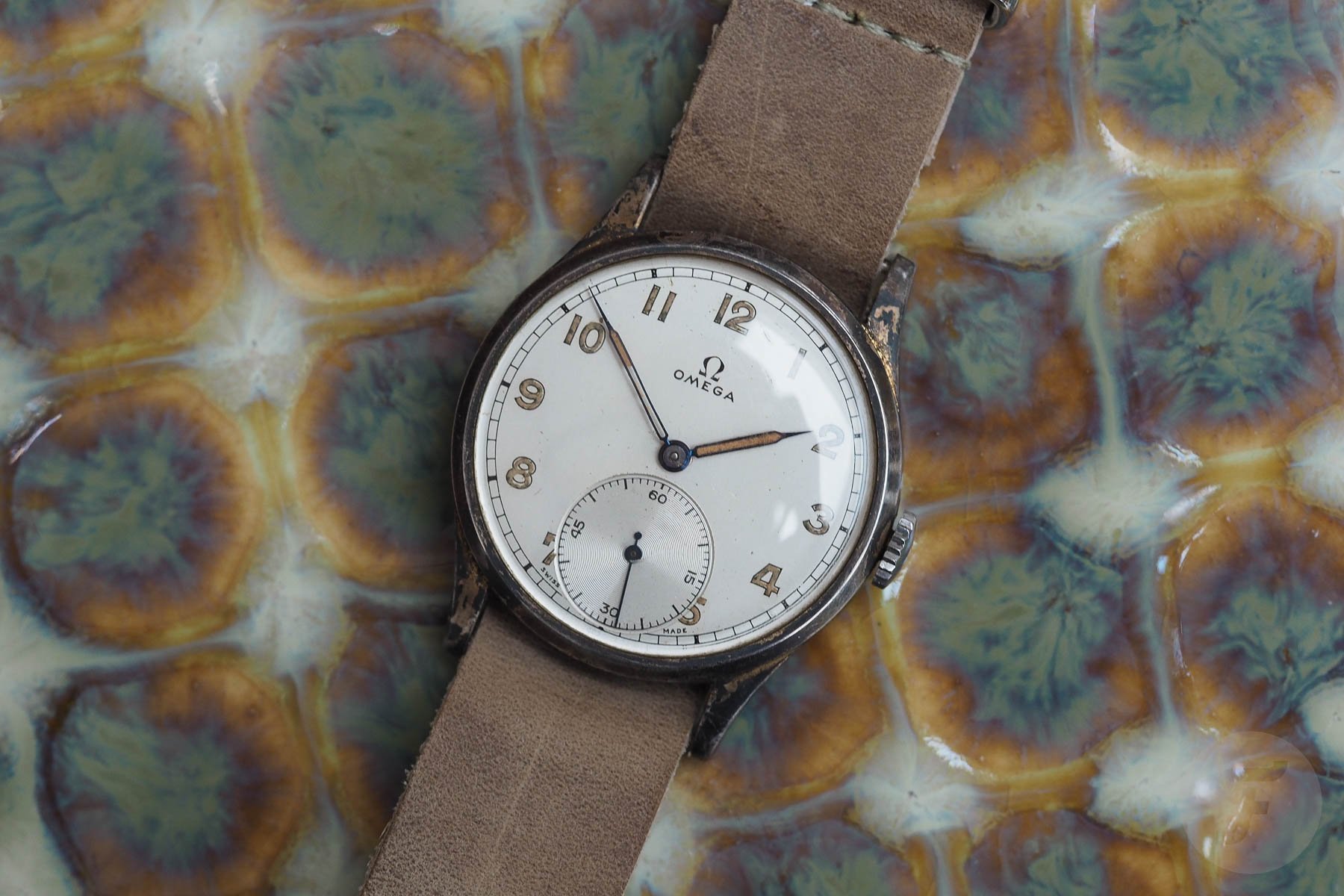Vintage Watches: An Omega 30T2 With A Sterling Silver Case
Today, we’ll take a closer look at a fascinating watch that I recently purchased at auction. As we’ll see, the watch brings together several notable details that separate it from other 30T2 models from the period. It was a gamble, but it has turned out to be a rewarding one thus far.
I don’t often participate in auctions. Today’s vintage Omega 30T2 only marks the second time that the word “SOLD!!” has been yelled from the rostrum in my direction. Here we are, though, and the seemingly endless number of smaller auction houses residing here in the UK have joined eBay as part of my hunting grounds. The UK, if nothing else, has oodles of history, and that translates to all manner of old watches for sale. I happened to stumble on this Omega during one of my normal perusal sessions. Then, luckily, I remembered to turn up for the auction.
The Omega 30T2 with a sterling silver case
There’s a surprising amount to unpack with this Omega 30T2. The movement’s serial number dates to 1939, which was certainly historic as Britain entered World War II in September. Omega buffs will also note that this was the year that the 30T2 was introduced to the market. The watch itself carries the case reference 13322. However, it’s not a Swiss-made case but was produced by the Dennison Watch Case Company in Birmingham, England.
The 13322 case reference was not uncommon, and Dennison made it for decades. The case has been found on Omega, Tissot, and Longines models to name a few. It was also produced in different materials, such as steel and gold. Dennison also produced a rare version in sterling silver, and it was this material that ultimately drew me into the auction.
Starting with the case
Reference 13322 cases aren’t huge at just below 34mm in diameter, but they wear well due to the 41mm lug-to-lug length. They feature flowing lugs, an unadorned snap-on case back, and a proportionate flat crown. A slim, domed acrylic crystal brings the whole thing to around 9mm thick. When I was researching the 13322, I found that most of the cases have drilled lug holes. The silver models, however, have fixed spring bars.
A quick search on eBay for either a 13322 or an Omega 30T2 will turn up a hefty number of watches. Look for sterling silver, though, and chances are that the search will come up empty. Pictures and accounts lead us to believe that the movements for the silver models were made in 1939 and 1940. The Birmingham assay stamps on the inside case back point to 1941. This helpful site is wonderful for decoding the symbols, and, as we can see, the capital “R” is the giveaway. As far as production figures or remaining pieces, no one knows. What I have ascertained is that they’re uncommon, with some longtime collectors having seen less than a handful.
Was silver an odd choice?
I was surprised that a silver case was used during wartime. Of course, watches need to be made of something metallic, and it turned out that silver was of relatively low importance for the military. Metals such as steel, copper, and nickel were far more crucial for weaponry and armaments. Because of this, silver was a substitute for some of these metals in daily life. It even carried a relatively low price of roughly 40 cents per ounce during the period. If we return to the Omega 30T2, I’d love to know how many were made and how many remain. Perhaps most were relegated to the scrap pile.
The 30T2 caliber
After writing about an IWC caliber 89 that I acquired late last year, I received many comments stating that a 30T2 would be a great movement to add to my collection. Of course, I knew this caliber, but I hadn’t yet found a model that excited me. Plus, so many Omega watches from this period have been redialed or overpolished. Thankfully, this 13322 doesn’t suffer from either of these maladies. Simply put, the 30T2 is a legendary powertrain that is famous for its robustness and serviceability. It was in production for over 25 years (under various three-digit references after 1949) and received updates along the way, including shock protection. Omega produced versions with central and sub-seconds along with chronometer-certified editions. The movement also powered military-issued Omega watches during World War II.
At its heart, the 30T2 is a straightforward, 30mm-diameter, 15-jewel, hand-wound caliber that runs at 18,000vph. It has a power reserve of approximately 44 hours. A search for photos of the 30T2 will primarily show rose-gold-colored movements. These featured copper plating and made up the majority of those produced during the movement’s lifetime. During the war, however, 30T2 movements received a nickel plating as copper was more valuable for the military. A big thanks to our reader CAL30T2 for this information! My movement runs nicely, but I will have it serviced soon on account of the regulator index’s current location.
A dial right up my street
Omega adorned these British-made 13322 cases with an astounding number of dials. Many were quite dressy, but the model I own looks more like a military watch. It contains a white dial with a printed black minute track and logo. The indices are radium, and the syringe hands have a filling of the same material. The hands are blued which adds a nice touch. As this is an early Omega 30T2, the watch has a sub-seconds dial. While I feel that the watch is incredibly well balanced, it’s amazing that the sub-dial comes within spitting distance of the central pinion. All in all, I couldn’t be happier with the overall design and condition despite some lume loss on the minute hand.
More on the Omega 30T2’s case
I’ve always had a penchant for watches made from uncommon materials. It’s what originally drew me to the Tudor Black Bay Fifty-Eight 925. The thought of combining a legendary movement with a rare case ultimately proved too much for me to resist on this Omega 30T2. The case itself offers the type of lug design that I like along with a simple, sloped bezel. Interestingly, the crown is likely some sort of plated base metal, but it seems consistent with other early steel 13322 references. A look at the case flank near the crown reveals what I believe is a lion hallmark. It has certainly aged and is not incredibly clear.
I admit that I briefly toyed with the thought of running a silver cloth over the case of this watch, but friends and internet articles kept me from taking action. There were plenty of articles stating that I wouldn’t cause harm, but I decided to leave it in its “as-found” condition. I like the look, and perhaps it will change on its own with a bit of wrist time.
A word about the auction experience
I found this Omega 30T2 at Gardiner Houlgate, an auctioneer in Wiltshire. I cannot recall the estimate, but it was somewhere in the £100 range. The watch attracted bidders and was already near £200 with pre-bids before the big day. I logged in and watched the proceedings live, and I ended up placing several bids before ultimately winning it for £580 before fees. With the “juice” and shipping, the total was somewhere around £740. Was this a good deal? Who knows? What I will say is that dealing with the auction house was seamless, and the watch arrived on my doorstep two days after the event. Not bad!
Wearing the Omega 30T2
For many, the thought of wearing a sub-34mm watch doesn’t compute. Admittedly, I was also concerned, but I did have confidence in the 41mm lug-to-lug. It turned out that my fears were unfounded as this Omega 30T2 wears beautifully. It’s not large, but the light-hued dial, the lugs, and the fact that fixed spring bars keep a strap from draping help provide some presence. It’s a cool piece, and the heavily tarnished case just adds to the rough-and-tumble vintage look. As far as the strap, I currently have it on an 18mm single-pass leather strap. It looks fine, but Balazs has generously agreed to donate a more upscale accompaniment.
Final thoughts
As I mentioned in the beginning and throughout the article, this Omega 30T2 brings together many special attributes. The movement, the date of production, the silver case, a lovely radium-lumed dial, and the partial British origin make it a real winner in my book. Plus, it was relatively affordable — I think. Other 13322 references are out there at decent prices and in nice condition. Some were even originally service award watches and saw little use. Regardless of whether the watch is silver, gold, or steel, I’m happy to have a 30T2 in my stable. It’s a worthwhile addition indeed.

